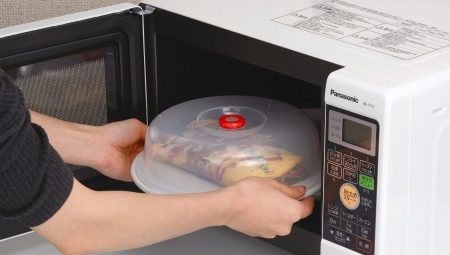Today, a microwave oven is an integral element of household appliances in the kitchen of almost every housewife. Such a household appliance greatly simplifies a wide variety of culinary processes: heating, defrosting, and sometimes even cooking.
However, not everyone knows that not all dishes are allowed to be sent to the microwave. What types of cookware designed specifically for this type of household appliance exist? How to choose and use it correctly? Look for answers to these and some other questions in our material.
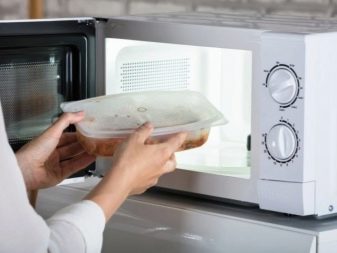
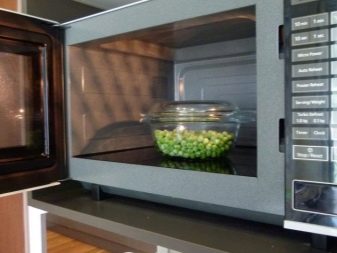
The principle of operation of the microwave
In order to understand which dishes can and cannot be sent to the microwave, it is important to understand the principle of operation of the microwave. To begin with, it should be noted that all work of this household appliance is based on interaction with water molecules, a large number of which are present in the composition of any product.
In the process of cooking in a microwave oven, the laws of physics play an important role. Moving, water molecules collide with each other. Due to this chaotic movement, heat is generated.
However, despite such physical processes, scientifically justified, the microwave oven is not able to distribute heat into the product, it heats only its edges. After that, another principle is included in the work - the principle of thermal conductivity, due to which the heat that has appeared along the edges of the product is distributed in the central part of its structure.
That is why products in the microwave oven should be cooked for a long time at medium power, but not for a short period of time at its highest rates.
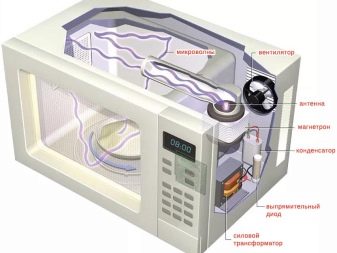
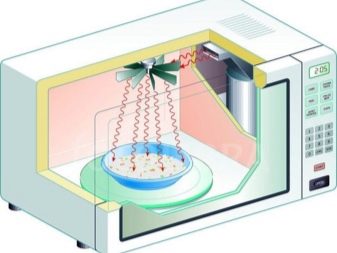
Utensil materials and requirements
First of all, in order to protect yourself and your household, as well as to avoid all kinds of emergencies, you need to understand which dishes should never be used for cooking or heating dishes in the microwave.
- The first ban concerns the use of iron utensils. Moreover, with respect to this material, the fact whether the dishes are enameled or not is completely irrelevant. This category includes plates, pans and cups made of aluminum and copper. The thing is that the walls of metal utensils are impermeable - radiation that emits a microwave oven cannot pass through them. That is why, if you put an iron plate with food in the microwave, the plate itself will heat up, not its contents.
If you are in the microwave for a long time and the surface heating level is quite strong, metal utensils will begin to emit sparks, which, in turn, can negatively affect the operability of the household appliance.
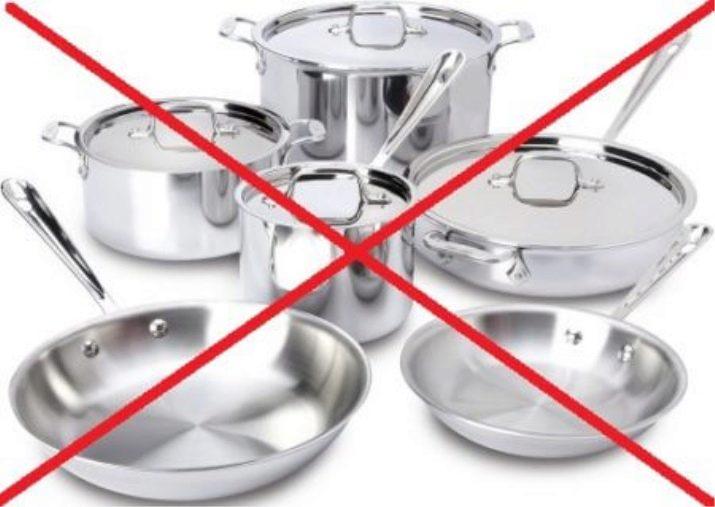
- Besides, Do not use dishes made of porcelain or glass and coated with gold paint in a variety of patterns, ornaments and rims. This rule applies even to fairly old dishes, the pattern on which is no longer uniform and is erased. If you ignore this rule and use glass or ceramic dishes with a gold pattern in the microwave, sparks may occur (as in the previous case).
A similar effect, however with a much lower intensity, can have containers, the pattern of which is applied with a matte paint without gloss. In this regard, it is recommended to use completely monophonic dishes without any colorful additions.
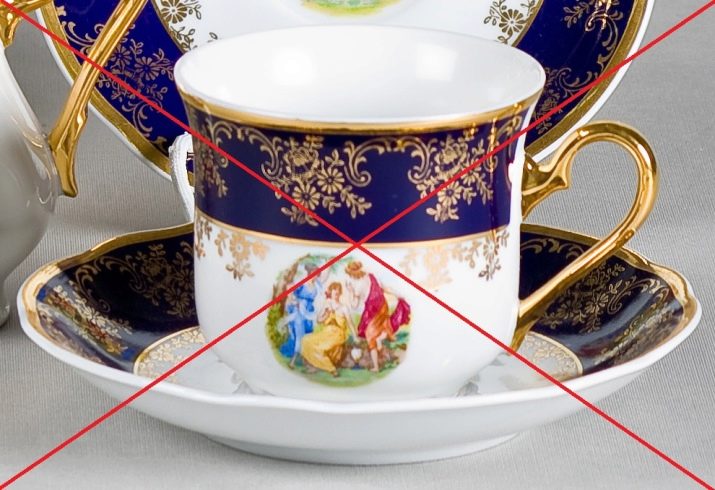
- Any containers that have punctures, scratches, or cracks should also not enter the microwave. The effect of waves and heat on such dishes will only increase the intensity and accelerate the destruction process.
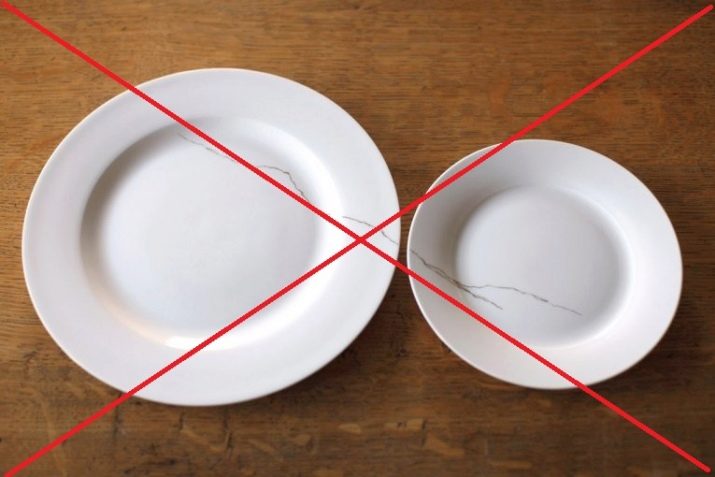
- Plastic or silicone, as well as disposable tableware will not withstand heat exposure and will melt. As a result of improper use of materials, not only kitchen equipment will suffer, but also the person who will eat food from such a plate. After all, in the process of heating, the plastic will begin to melt and enter the food product.
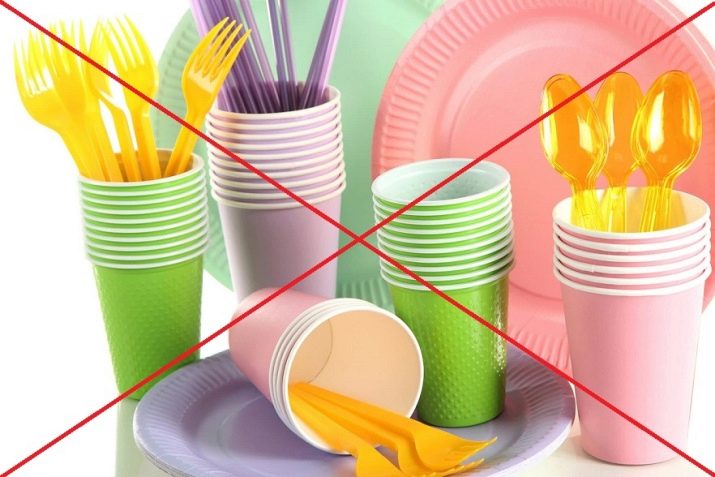
- Crystal products (for example, dinner sets) will collapse if put in the microwave. The fact is that similar products contain particles of metals, and their walls are rather heterogeneous in their thickness. That is why, if you want to preserve a family heirloom, do not put service elements in a household appliance.
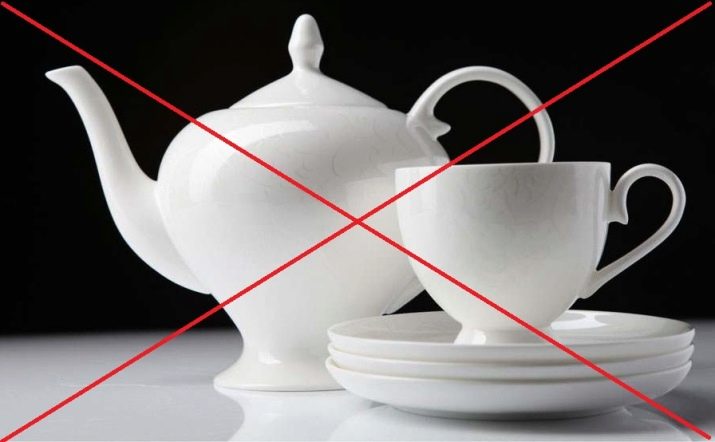
- The ban on use in the microwave applies to wooden containers. This material does not withstand high temperatures - it begins to crack, crack, and at especially high rates it can char or even catch fire.

Among other things, it is worth remembering that during the heating of food, containers should not be covered with tight lids or foil (except for species that are specifically designed for microwave). Otherwise, an explosion may occur.
To summarize the above, you should make a list of materials, utensils and products from which are allowed for use in a microwave oven:
- ceramics without a pattern (however, be careful when you take out the ceramic container, since this material is very hot);
- porcelain ware without high sides and lids without a pattern;
- special heat-resistant plastic containers;
- linen or cotton napkins (used for heating bread and baking);
- glass (can be used only in the mode of heating or defrosting).
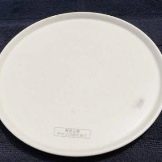
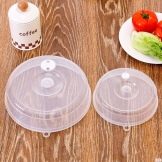
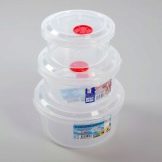
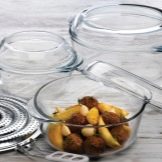
Shapes and sizes
In addition to the fact that it is necessary to take into account the material from which one or another container is made, it is important to pay attention also to the shape and size of each particular product. So, for use in the microwave, it is recommended to take not too high plates.

In addition, it is necessary to fill the dishes, taking into account the fact that in the oven the contents of the container will expand and increase in volume, and therefore food can overflow or spill out over the edge.
As for the sizes, they certainly should match the sizes of your microwave. Do not use containers if, when they are placed inside the device, the quality of closing the door is impaired or the operation of the rotating disk stops.
It is believed that the smaller the dishes, the better. In it, food warms up faster, since heat will be transferred faster. If you use a microwave oven for baking, you should choose dishes of high height. Especially if during cooking the dish will increase in size.
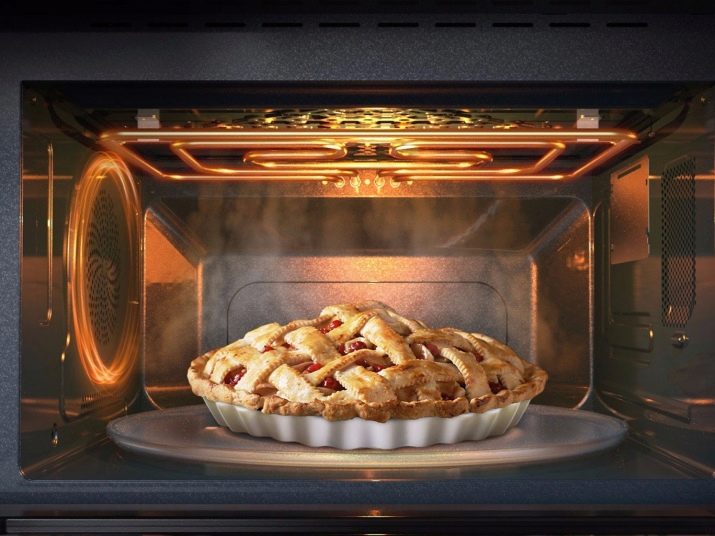
Criterias of choice
When choosing the dishes that you plan to use for a microwave oven, it is important to adhere to the rules described above. Only permitted materials should be preferred. In addition, follow the markings that must be indicated on the surface of the products. So, for a microwave oven, you can choose a kit containing several types of marking:
- microwave safe;
- recommended microwave;
- PP (PP);
- designation in the form of a triangle of arrows, supplemented by the numbers 0 and 5.
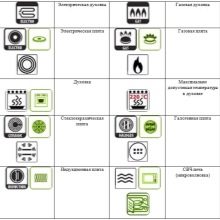
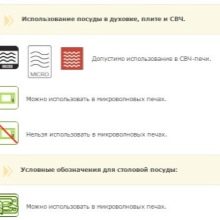

If you find on the container one of the following designations, but it is crossed out, this means that the dishes cannot be used in the microwave.
Also when choosing dishes give preference to those tanks which have an oval or round shape. It is believed that in them the food will be warmed up, thawed or cooked most evenly.
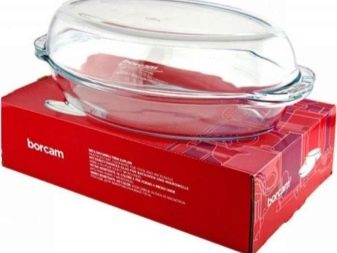
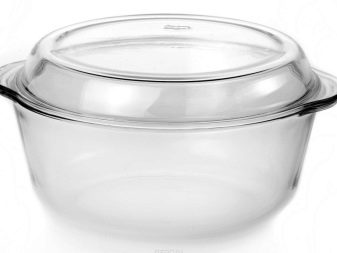
Terms of use
Even if you have chosen the right dishes, Some principles of its operation must be observed.
- Cookware made of heat-resistant or refractory glass is considered universal, and therefore it can be used without any restrictions. In it, you can not only heat food and thaw foods, but also prepare dishes.
- Silicone dishes of high quality and with the appropriate markings can also be used for cooking. Moreover, it is not necessary to lubricate it with oil or fat, because it has non-stick properties. However, remember that all this applies only to quality certified cookware. Fakes can not only collapse in a microwave oven, but also harm food products.
- In heat-resistant plastic containers for microwave use, cooking is not recommended. The thing is that the prolonged exposure to high temperature on containers made of such a material can cause their destruction. Therefore, in plastic containers it is only allowed to heat food.
- Any capacity should be placed in the microwave exactly in the middle. In this case, you will ensure uniform heating of the entire contents of the plate. Otherwise, one part of the dish may turn out to be hot and the other almost cold.
- In addition, consider the fact that in no case should the dish touch the walls of the microwave oven (no matter what material the container is made of). In this regard, when buying dishes, pay attention to its dimensions.
- It is not recommended to heat containers in a microwave oven that have just been taken out of the refrigerator (especially a freezer). It is necessary to allow the plate to warm up a little at room temperature. If you ignore this rule, you can not only spoil the dish and the container, but also cause irreparable harm to the device.
- After you have warmed up the food and removed the container, do not forget to turn off the microwave oven. Never turn on the microwave when it is empty.
- To ensure that food from the plate is not sprayed throughout the oven, purchase special covers designed for the microwave. They will greatly facilitate the cleaning process of a household appliance and extend its service life.
- Regardless of the dishes, follow the rules for heating a certain type of food. For example, tomatoes and sausages that you cook in a microwave oven must be pierced with a fork in advance, but it is forbidden to heat eggs in the microwave at all.
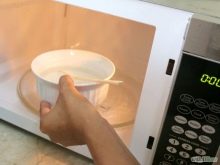
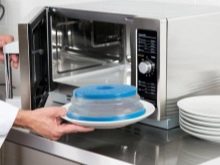

Achievements of modern science amaze consciousness. Moreover, it is important that they have not only theoretical, but also practical significance. A microwave oven as a household appliance item has appeared recently. However, today many housewives cannot imagine life without this assistant. At the same time, it is worth remembering that during the operation of the microwave oven, as well as in the process of using any other type of household appliances, it is important to follow some rules.
First of all, it concerns the choice of dishes. If you follow all the advice of specialists, you can extend the microwave oven and greatly simplify the cooking process.

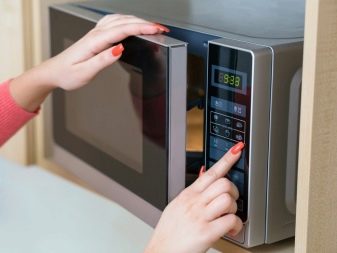
See below for recommendations on choosing microwave cookware.
